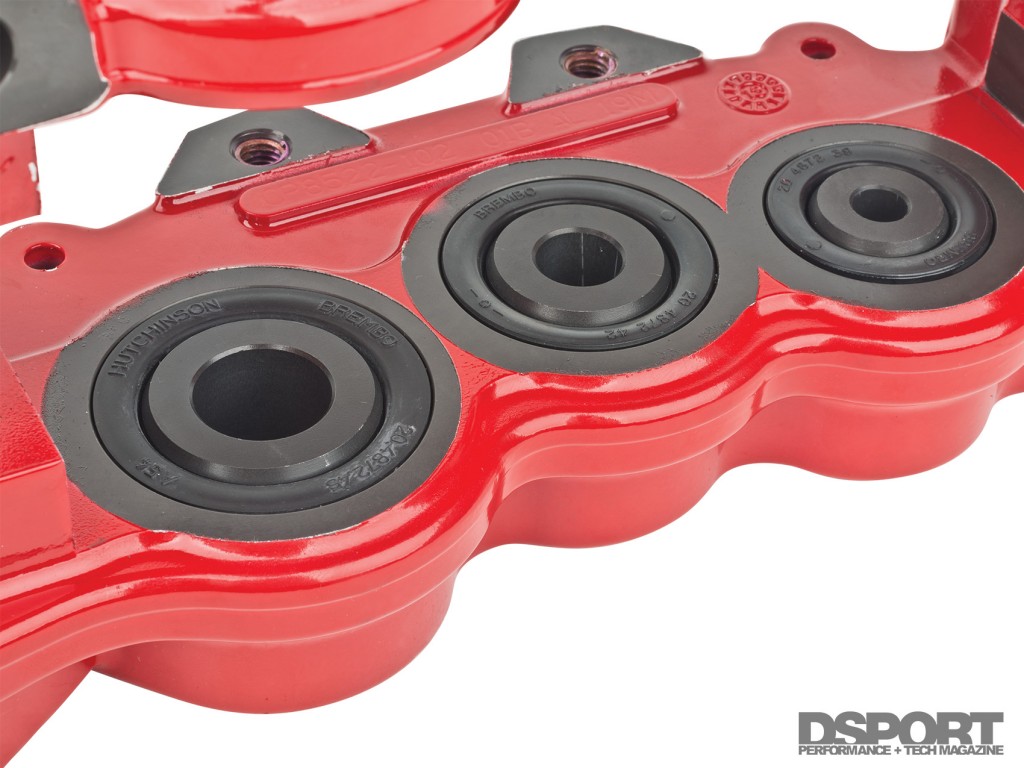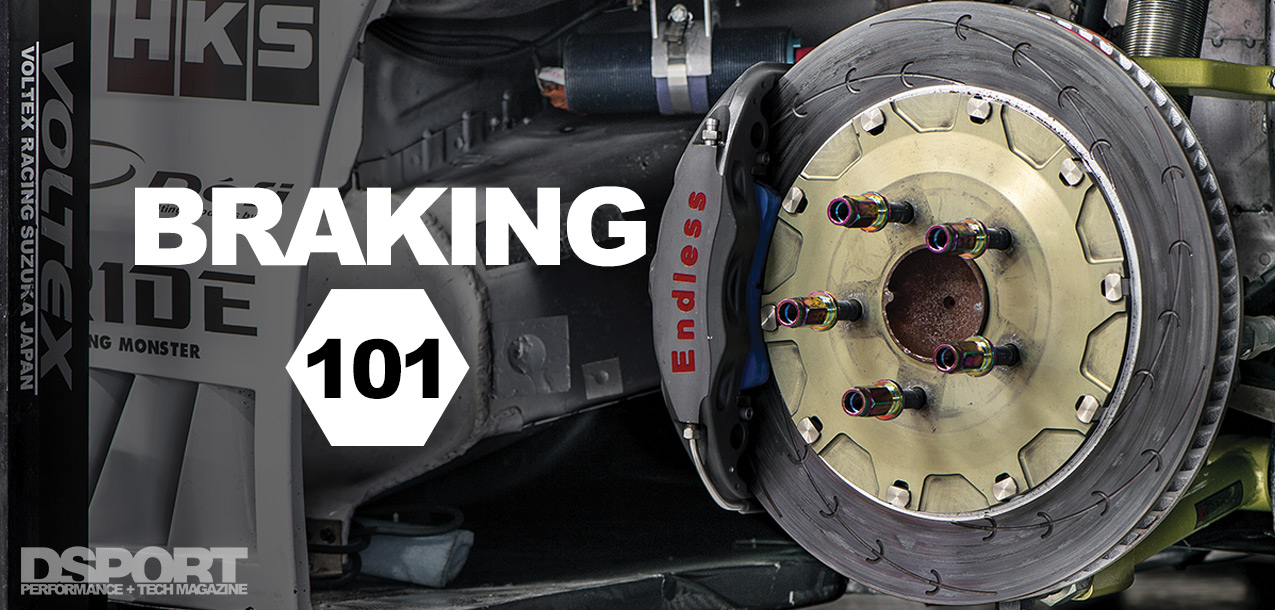The Grip: Calipers
The mechanical device that actually squeezes the brake pad to the rotor is termed the caliper. On a four-wheel-disc-brake system, you will find one caliper at each wheel. The caliper itself has anywhere from one to twelve pistons that push the brake pads toward the rotor when brake line pressure is increased from brake pedal input. The advantage of having additional pistons is that the pressure applied to the brake pad is more uniform.
When upgrading the calipers on your brake system, it is important to take note of the total brake caliper piston area. You can calculate the total caliper piston area with the following formula:
If all of the pistons are the same diameter, the equation is:
Total Area = (# of pistons) x (π x (piston diameter / 2)2)
If the pistons are of different sizes, you must sum the individual areas of each of the pistons to get the total piston area.
Unless you are planning to change the master cylinder, it’s best to select calipers with a total piston area that is close to your original piston area. Most manufacturers will offer different piston options even within the same caliper housings. If the new calipers have a total piston area that is significantly greater than your original, the pedal stroke required to engage the brakes may be too long. In these cases, you will need to upgrade the master cylinder to a larger diameter. Match the percentage increase in caliper piston area to the master cylinder piston area increase to achieve a similar pedal response to the original calipers.
The Wilwood DPHA kit utilizes the factory rotor size but offers increased brake torque due to the increase in total caliper piston area.
Total Caliper Piston Area
| Increased Caliper Piston Area | Decreased Caliper Piston Area |
|---|---|
| – Increases Pedal Travel | – Decreases Total Pedal Travel |
| – More Force Applied to Pads(With Same Pressure) | – Less Force Applied to Pads(With Same Pressure) |
| – Increases Brake Torque | – Decreases Brake Torque |
Upgrading to a set of aftermarket calipers will likely change the amount of total caliper piston area you have acting on the pads. If the new calipers have more piston area, pedal travel will be increased to get maximum braking action. A reduction in piston area will decrease total pedal travel. By changing the pedal ratio of master cylinder size, the pedal travel can be restored to its previous length. In these cases, caliper upgrades featuring increased piston area will require a reduction in master cylinder size. The opposite holds true for upgraded calipers with a reduction in total piston area.
Street calipers employ the use of piston seals to protect against the elements and ensure worry-free operation.
Pedal Ratio Science
| Increased Master Cylinder Bore Diameter | Decreased Master Cylinder Bore Diameter |
|---|---|
| – Pedal Effort Reduces | – Pedal Effort Increases |
| – Pedal Travel Increases | – Pedal Travel Reduces |
| – Maximum Pushrod Stroke Reduces | – Maximum Pushrod Stroke Increases |
| – Can Offset Caliper Piston Area Increases | – Can Offset Caliper Piston Area Decreases |


